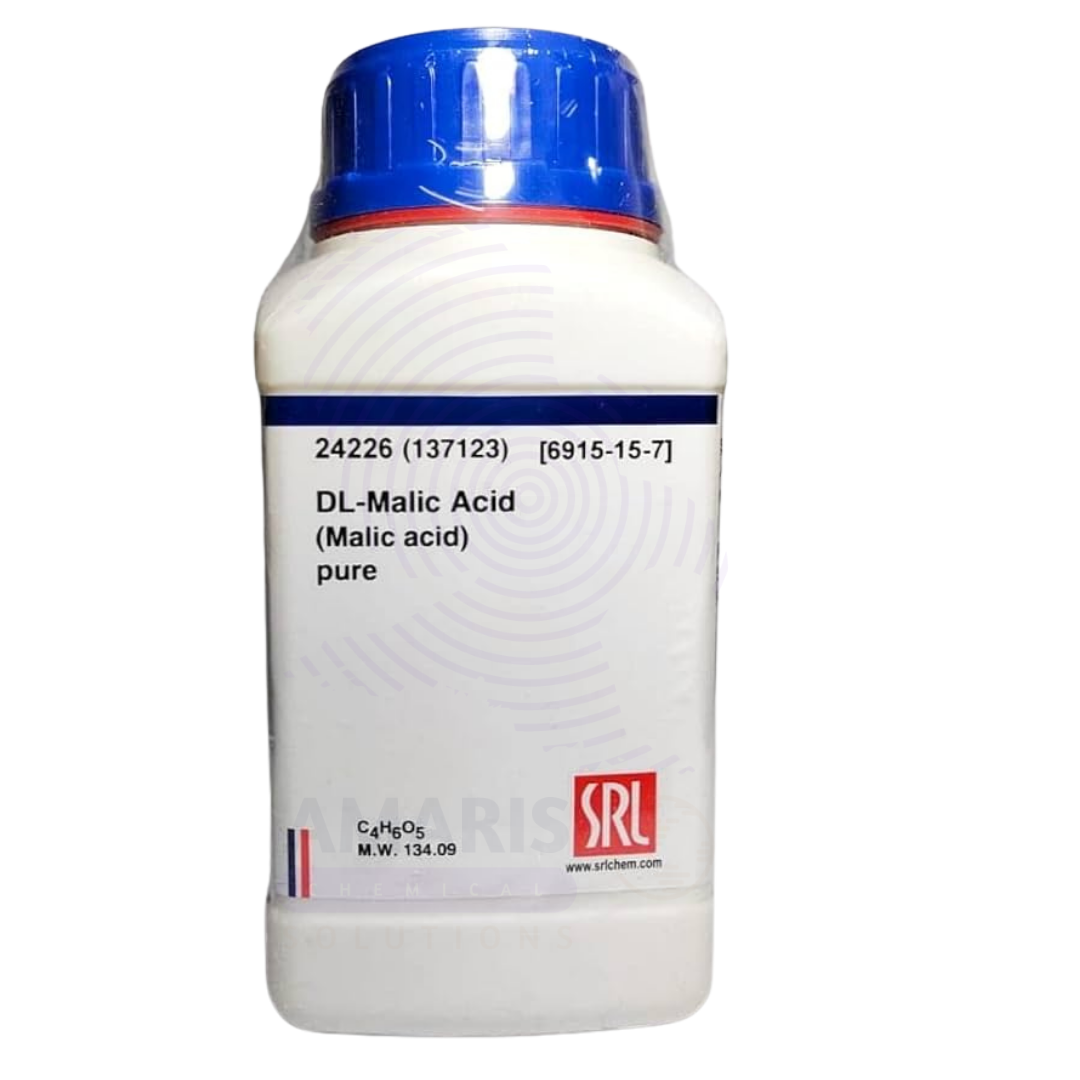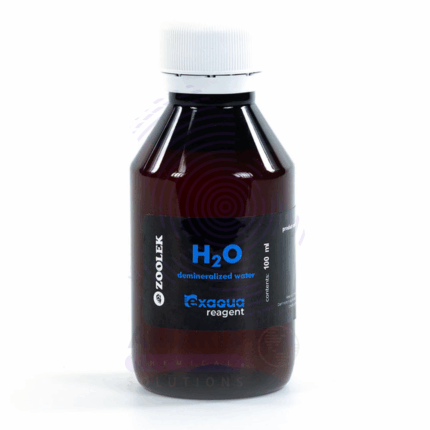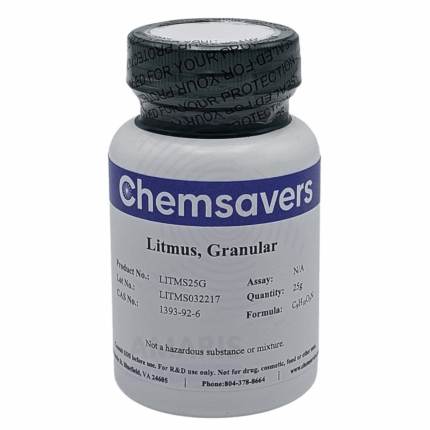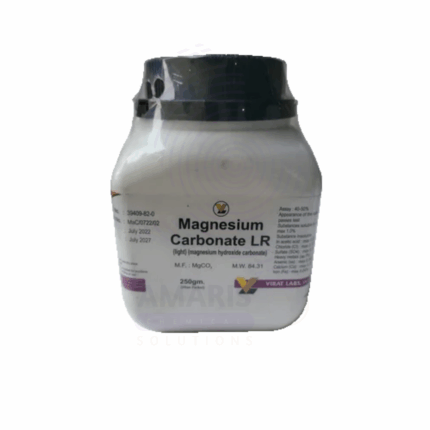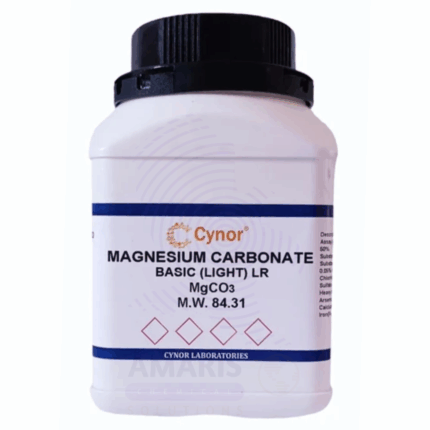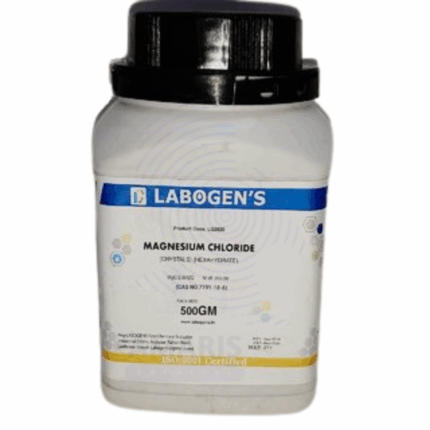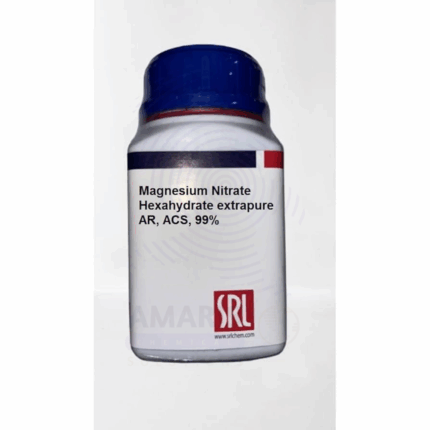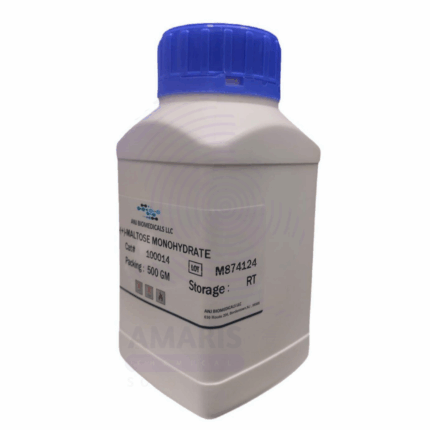

Malic Acid Extra Pure
$ 16.90 Original price was: $ 16.90.$ 16.78Current price is: $ 16.78.
Malic Acid Extra Pure is a high-grade, naturally occurring dicarboxylic acid known for its sharp, tart flavor and versatility in both laboratory and industrial settings. It is commonly found in fruits such as apples and is widely used as an acidulant in food and beverage formulations, where it enhances flavor, preserves freshness, and improves pH stability. In laboratory applications, Malic Acid is employed in biochemical research, particularly in studies involving the citric acid cycle, due to its role as an intermediate metabolite. Its excellent solubility in water and mild acidity also make it suitable for cosmetic formulations and pharmaceutical preparations. The extra pure grade ensures high analytical accuracy and consistent quality across applications requiring strict purity standards.
Malic Acid Extra Pure
Primary Uses
- Buffer Solution Component:
- Commonly used in the preparation of biological and chemical buffers due to its mild acidity and good solubility.
- Standard in Analytical Chemistry:
- Employed in titration experiments and standardization procedures involving weak organic acids.
Secondary Uses
- Food Chemistry Studies:
- Used in simulated food systems and flavor profiling experiments to study acidity and sourness.
- Metabolic Pathway Research:
- Utilized in studies related to the Krebs cycle as an intermediate in cellular respiration.
- Chelation Experiments:
- Sometimes used in laboratory demonstrations of metal ion chelation and complexation.
| PACK SIZE |
500 grams Plastic Tin |
|---|
1. Basic Identification Attributes
- Chemical Name: Malic Acid
- Synonyms: Hydroxybutanedioic acid, 2-Hydroxy-1,2,3-propane-tricarboxylic acid
- CAS Number: 6915-15-7
- Molecular Formula: C₄H₆O₅
- Molecular Weight: 134.09 g/mol
- Appearance: White crystalline powder
- Odor: Odorless or slightly acidic
- Solubility: Highly soluble in water and alcohol
- Grade: Extra Pure
2. Safety & Hazard Attributes
- GHS Classification:
- Eye Damage/Irritation – Category 2A
- Skin Irritation – Category 3
- Not classified as a hazardous substance under many regulatory standards, but precaution is advised
- Hazard Statements:
- H319: Causes serious eye irritation
- H316: Causes mild skin irritation
- Precautionary Statements:
- P264: Wash hands thoroughly after handling
- P280: Wear protective gloves and eye protection
- P305 + P351 + P338: IF IN EYES: Rinse cautiously with water; remove contact lenses if present
- P337 + P313: If eye irritation persists: Get medical advice
- Personal Protective Equipment (PPE):
- Safety goggles
- Chemical-resistant gloves
- Lab coat
- First Aid Measures:
- Inhalation: Move to fresh air; seek medical attention if symptoms persist
- Skin Contact: Wash with water and mild soap
- Eye Contact: Rinse thoroughly with water for several minutes
- Ingestion: Rinse mouth; seek medical attention if large quantity is consumed
- Fire Hazards:
- Not flammable but may decompose under fire conditions
- Use CO₂, foam, or dry chemical extinguishers
3. Storage & Handling Attributes
- Storage Conditions:
- Keep container tightly closed
- Store in a cool, dry, and well-ventilated area
- Protect from moisture and direct sunlight
- Handling Tips:
- Avoid dust formation
- Handle with proper PPE in a clean, dry environment
- Use a dust mask if working with powder in large quantities
4. Laboratory Applications
- Primary Uses:
- Acidulant in food and beverage research and formulation (analytical or non-consumable use)
- Buffer preparation in biochemical and biological studies
- pH adjustment in lab-scale formulation
- Secondary Uses:
- Study of organic acid metabolism in educational and research labs
- Chelating agent in coordination chemistry
- Standard compound in chromatography and quality control
SAFETY PRECAUTIONS
Personal Protective Equipment (PPE):
- Wear a lab coat, nitrile gloves, and protective goggles.
- If dust is generated, use a dust mask or work in a fume hood.
Handling:
- Avoid inhalation of dust and contact with skin, eyes, and clothing.
- Prevent formation of dust and use only in well-ventilated areas.
- Wash hands thoroughly after handling.
Storage:
- Store in a cool, dry, and well-ventilated place.
- Keep the container tightly closed and away from moisture.
- Avoid storing near strong oxidizers or strong bases.
FIRST AID MEASURES
Inhalation:
- Move to fresh air.
- Seek medical attention if symptoms such as coughing or shortness of breath occur.
Skin Contact:
- Wash with plenty of soap and water.
- Remove contaminated clothing.
- Seek medical advice if irritation develops.
Eye Contact:
- Rinse eyes cautiously with water for several minutes.
- Remove contact lenses if present and easy to do.
- Continue rinsing and seek medical attention if irritation persists.
Ingestion:
- Rinse mouth with water.
- Do not induce vomiting.
- Get medical help if symptoms appear or persist.
FIRE FIGHTING MEASURES
Flammability:
- Not highly flammable, but may burn at high temperatures.
Extinguishing Media:
- Use CO₂, dry chemical powder, or foam.
- Water spray may be used to cool surrounding surfaces.
Hazardous Combustion Products:
- May emit carbon monoxide (CO) and carbon dioxide (CO₂) upon decomposition.
Firefighter Protection:
- Wear self-contained breathing apparatus (SCBA) and full protective gear.


 Preservatives(food)
Preservatives(food) Flavor Enhancers
Flavor Enhancers Acidulants
Acidulants Sweeteners
Sweeteners Antioxidants
Antioxidants Colorants(food)
Colorants(food) Nutraceutical Ingredients (food)
Nutraceutical Ingredients (food) Nutrient Supplements
Nutrient Supplements Emulsifiers
Emulsifiers
 Collectors
Collectors Dust Suppressants
Dust Suppressants Explosives and Blasting Agents
Explosives and Blasting Agents Flocculants and Coagulants
Flocculants and Coagulants Frothers
Frothers Leaching Agents
Leaching Agents pH Modifiers
pH Modifiers Precious Metal Extraction Agents
Precious Metal Extraction Agents
 Antioxidants(plastic)
Antioxidants(plastic) Colorants (Pigments, Dyes)
Colorants (Pigments, Dyes) Fillers and Reinforcements
Fillers and Reinforcements Flame Retardants
Flame Retardants Monomers
Monomers Plasticizers
Plasticizers Polymerization Initiators
Polymerization Initiators Stabilizers (UV, Heat)
Stabilizers (UV, Heat)
 Antifoaming Agents
Antifoaming Agents Chelating Agents
Chelating Agents Coagulants and Flocculants
Coagulants and Flocculants Corrosion Inhibitors
Corrosion Inhibitors Disinfectants and Biocides
Disinfectants and Biocides Oxidizing Agents
Oxidizing Agents pH Adjusters
pH Adjusters Scale Inhibitors( water)
Scale Inhibitors( water)
 Antioxidants(cosmetic)
Antioxidants(cosmetic) Emollients
Emollients Fragrances and Essential Oils
Fragrances and Essential Oils Humectants
Humectants Preservatives
Preservatives Surfactants(cosmetic)
Surfactants(cosmetic) Thickeners
Thickeners UV Filters
UV Filters
 Fertilizers
Fertilizers Soil Conditioners
Soil Conditioners Plant Growth Regulators
Plant Growth Regulators Animal Feed Additives
Animal Feed Additives Biostimulants
Biostimulants Pesticides (Herbicides, Insecticides, Fungicides)
Pesticides (Herbicides, Insecticides, Fungicides)
 Active Pharmaceutical Ingredients (APIs)
Active Pharmaceutical Ingredients (APIs) Excipients
Excipients Solvents(pharmaceutical)
Solvents(pharmaceutical) Antibiotics
Antibiotics Antiseptics and Disinfectants
Antiseptics and Disinfectants Vaccine Adjuvants
Vaccine Adjuvants Nutraceutical Ingredients (pharmaceutical)
Nutraceutical Ingredients (pharmaceutical) Analgesics & Antipyretics
Analgesics & Antipyretics
 Analytical Reagents
Analytical Reagents Solvents(lab)
Solvents(lab) Chromatography Chemicals
Chromatography Chemicals Spectroscopy Reagents
Spectroscopy Reagents microbiology-and-cell-culture-reagents
microbiology-and-cell-culture-reagents Molecular Biology Reagents
Molecular Biology Reagents Biochemical Reagents
Biochemical Reagents Inorganic and Organic Standards
Inorganic and Organic Standards Laboratory Safety Chemicals
Laboratory Safety Chemicals Specialty Laboratory Chemicals(Special Laboratory Equipment)
Specialty Laboratory Chemicals(Special Laboratory Equipment)
 Demulsifiers
Demulsifiers Hydraulic Fracturing Fluids
Hydraulic Fracturing Fluids Scale Inhibitors(oil)
Scale Inhibitors(oil) Surfactants(oil)
Surfactants(oil) Drilling Fluids
Drilling Fluids
 Dyes and Pigments
Dyes and Pigments Bleaching Agents
Bleaching Agents Softening Agents
Softening Agents Finishing Agents
Finishing Agents Antistatic Agents
Antistatic Agents
 Admixtures
Admixtures Waterproofing Agents
Waterproofing Agents Sealants and Adhesives
Sealants and Adhesives Curing Compounds
Curing Compounds Concrete Repair Chemicals
Concrete Repair Chemicals Anti-Corrosion Coatings
Anti-Corrosion Coatings
 Surfactants(cleaning)
Surfactants(cleaning) Builders
Builders Enzymes
Enzymes Solvents (Cleaning)
Solvents (Cleaning) Fragrances
Fragrances
 Electronic Chemicals
Electronic Chemicals Catalysts
Catalysts Lubricants
Lubricants Photographic Chemicals
Photographic Chemicals Refrigerants
Refrigerants Automotive chemicals
Automotive chemicals Pyrotechnic Chemicals
Pyrotechnic Chemicals
 Biodegradable Surfactants
Biodegradable Surfactants Bio-based Solvents
Bio-based Solvents Renewable Polymers
Renewable Polymers Carbon Capture Chemicals
Carbon Capture Chemicals Wastewater Treatment Chemicals
Wastewater Treatment Chemicals
 Pigments
Pigments Solvents(paint)
Solvents(paint) Specialty Coatings
Specialty Coatings Binders/Resins
Binders/Resins Additives
Additives Driers
Driers Anti-Corrosion Agents
Anti-Corrosion Agents Functional Coatings
Functional Coatings Application-Specific Coatings
Application-Specific Coatings
 Fresh Herbs
Fresh Herbs Ground Spices
Ground Spices Whole Spices
Whole Spices Spice Blends
Spice Blends Dried Herbs
Dried Herbs
 Leavening Agents
Leavening Agents Dough Conditioners
Dough Conditioners Flour Treatments
Flour Treatments Fat Replacers
Fat Replacers Decoratives
Decoratives Preservatives(baking)
Preservatives(baking)
 Plasticizers & Softeners
Plasticizers & Softeners Reinforcing Agents
Reinforcing Agents Adhesion Promoters
Adhesion Promoters Vulcanizing Agents
Vulcanizing Agents Antidegradants
Antidegradants Blowing Agents
Blowing Agents Fillers & Extenders
Fillers & Extenders Accelerators & Retarders
Accelerators & Retarders